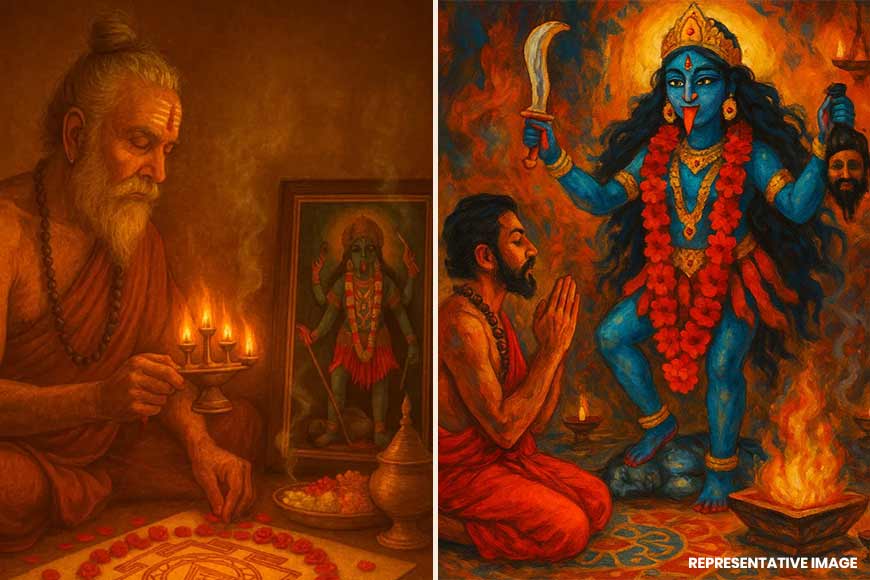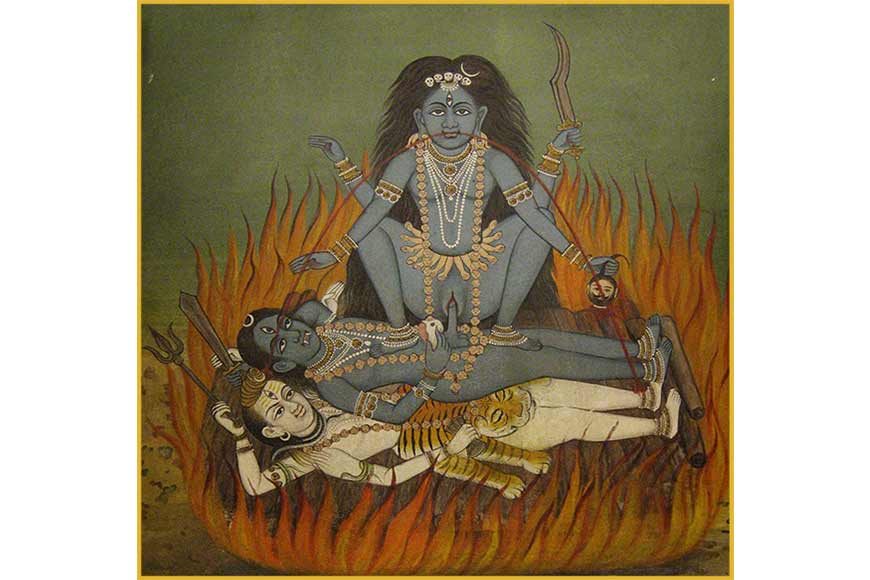Kali puja: Tantra sadhana and the worship of shakti – GetBengal story

Bengal’s spiritual history has always been marked by a powerful feminine current—a culture where the Divine Mother is both feared and adored. Kali Puja is celebrated on the new moon night of Dipanita Amavasya in Kartik (October–November). Kali Puja symbolizes both the worship of destruction and the understanding that time (kal) is the ultimate dispeller of illusion. In Bengal, Kali is revered as the goddess of both death and freedom, releasing her offspring from the shackles of ignorance and ego.
The connection between Kali Puja and Tantra Sadhana is ancient and inseparable. Tantra is often misunderstood as mere ritualism or occult practice, but it is actually a discipline of transformation. In Tantric philosophy, nothing is impure; every force in nature is divine when realized consciously.
Kali Puja embraces every aspect of life, in contrast to other worship practices that place an emphasis on moderation. Offerings with profound Tantric meanings include rice, red hibiscus, mutton, fish, and even wine
Kali, as Adyashakti (the primordial energy), represents that consciousness. The Tantric practitioner, or sadhak, seeks not to escape the world but to experience the divine energy through body, breath, sound, and surrender.
Texts like the Niruttara Tantra, Karpuradi Stotra, and Yogini Tantra — many of which originated or flourished in Bengal and Assam — describe Kali as the ultimate reality from which even Brahma, Vishnu, and Shiva arise and dissolve like waves in an endless sea.

In the eighteenth century, when Tantra and Bhakti fused into a distinctive Bengali spiritual movement, Ramprasad Sen emerged as its most luminous voice. His devotional songs to Kali captured the essence of the Tantric worldview: that the divine and the human are not separate but reflections of the same consciousness.
Tantric texts describe the Goddess in two aspects — the beautiful and the terrible. Kali embodies the latter: she is the fierce, time-devouring energy that annihilates ignorance. Yet to her true devotee, she is Mahamaya the one who binds as illusion and releases as wisdom. Ramprasad internalised this paradox in his songs. To him, Kali was both the mother who cradles and the power that dissolves.
According to tradition, the true Kali sadhana takes place at midnight, under the new moon, when the world sleeps and the goddess awakens. The sadhana chants the Kali mantra, visualising her form—naked, dark, adorned with skulls, but radiating compassion. Each symbol becomes an inner metaphor: the sword that severs attachment, the tongue that swallows ego, and the darkness that reveals truth.
Kali Puja embraces every aspect of life, in contrast to other worship practices that place an emphasis on moderation. Offerings with profound Tantric meanings include rice, red hibiscus, mutton, fish, and even wine. They stand for the surrender of human instincts and desires to the Divine, which entails transformation rather than repression. Through ritual, the devotee purifies the senses, recognizing that the same energy which fuels desire can also lead to liberation (moksha).
The connection between Kali Puja and Tantra Sadhana is ancient and inseparable. Tantra is often misunderstood as mere ritualism or occult practice, but it is actually a discipline of transformation.
In modern Bengal, many families have replaced animal offerings with symbolic substitutes like pumpkins or ash gourds (chalkumro), maintaining the spirit of surrender while adapting to changing times.
The Mother is both the beginning and the end — and beyond both, she is infinite. Through Tantra sadhana, Bengal’s devotion to Kali becomes a philosophy, a way of seeing the divine in every heartbeat, every shadow, every moment of life.










